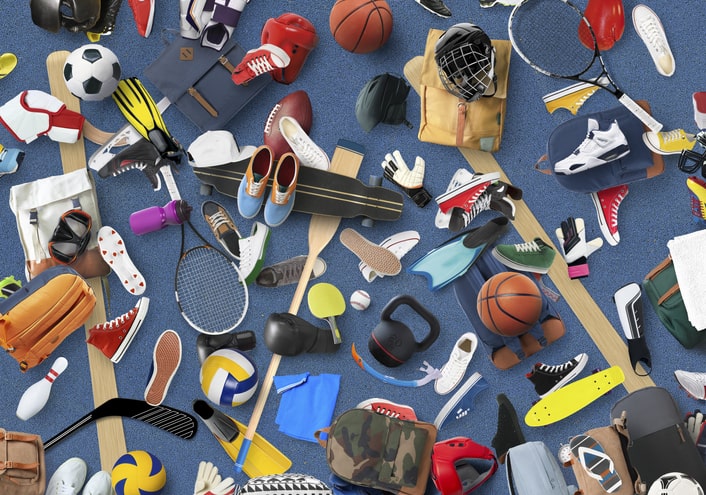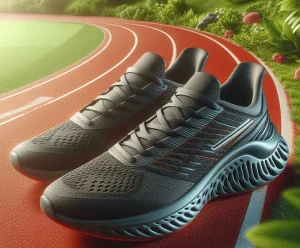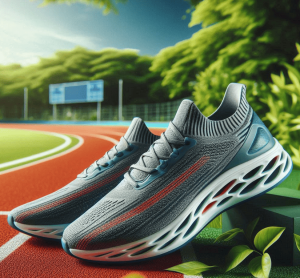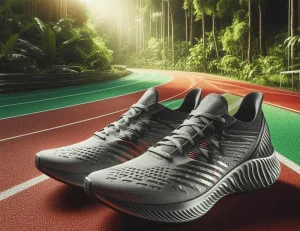Table of Contents
Used Sports Equipment Finding quality Used Sports Equipment at a bargain can be a rewarding endeavor, whether you’re an athlete on a budget, a parent outfitting growing children, or a casual player looking to try a new sport without breaking the bank. The market for second-hand sports gear is vast and varied, offering everything from nearly new high-end items to well-loved essentials. With the right approach, you can score some incredible deals that will enhance your sporting experience without emptying your wallet.

Understanding the Benefits of Used Sports Equipment
Opting for Used Sports Equipment has several advantages. First and foremost, it’s cost-effective. High-quality new sports gear can be prohibitively expensive, but used items often sell for a fraction of the price. This affordability allows you to try new sports or activities without a significant financial commitment.
Additionally, buying used equipment is an environmentally friendly choice. By purchasing second-hand, you reduce the demand for new products, which in turn lowers the environmental impact associated with manufacturing, packaging, and shipping.
Finally, used sports gear can often come with a bit of history or character. Imagine using a baseball glove that’s already been broken in or a pair of skates that have seen their fair share of ice time. These items often perform better right out of the gate compared to their stiff, new counterparts.
Where to Look for Quality Used Sports Equipment
Local Sports Shops
Many local sports shops sell both new and used equipment. These stores often have trade-in programs where athletes can exchange their old gear for store credit. The used items are typically inspected and refurbished before being put back on sale, ensuring you get quality products. Visiting these shops allows you to physically inspect the equipment and even try it out before making a purchase.
Online Marketplaces
Websites like eBay, Craigslist, and Facebook Marketplace are treasure troves for Used Sports Equipment. These platforms offer a wide variety of gear, from niche items to everyday essentials. When shopping online, always check the seller’s ratings and reviews to ensure they are reputable. Look for detailed descriptions and clear photos of the items to assess their condition.
Specialized Websites
There are websites dedicated specifically to selling used sports gear, such as Play It Again Sports and SidelineSwap. These platforms are designed with athletes in mind, offering a curated selection of equipment. They often have better customer service and return policies compared to general online marketplaces.
Thrift Stores and Garage Sales
Thrift stores and garage sales can be hit-or-miss, but they sometimes yield incredible finds. These venues are great for finding unique items at rock-bottom prices. When browsing these options, it’s helpful to have a list of the gear you’re looking for and a good understanding of fair pricing for those items.
Community Boards and Social Media Groups
Local community boards, both online and offline, are excellent places to find Used Sports Equipment. Social media platforms like Facebook often have groups dedicated to buying, selling, and trading sports gear within specific communities. These groups can be particularly useful for finding local deals and avoiding shipping costs.
Tips for Scoring the Best Deals
Research Before You Buy
Knowledge is power when it comes to buying used equipment. Research the brand and model of the items you’re interested in, noting their typical new and used prices. Understanding the market value helps you recognize a good deal when you see one and avoid overpaying.
Inspect the Equipment Thoroughly
Whether you’re buying in person or online, thoroughly inspect the equipment before finalizing the purchase. Check for signs of excessive wear, such as cracks, tears, or rust. For online purchases, request additional photos or information if the listing is vague. Don’t hesitate to ask the seller questions about the item’s history and usage.
Negotiate the Price
Haggling is often expected when buying second-hand. Be prepared to negotiate the price, especially if you notice minor flaws or if the item has been listed for a while. Polite and respectful negotiation can often lead to a better deal.
Timing is Everything
The timing of your purchase can impact the price you pay. For instance, buying winter sports gear in the off-season can lead to significant savings. Similarly, purchasing items shortly after the peak season ends might yield better deals as sellers look to clear out inventory.
Consider Refurbished Items
Refurbished items are used products that have been restored to like-new condition, often by the manufacturer or a certified technician. While they may cost slightly more than typical used items, they usually come with a warranty, providing extra peace of mind.
Factor in Shipping Costs
When buying online, always consider the cost of shipping. Sometimes an item that seems like a great deal becomes less attractive once you add in the shipping fees. Look for local sellers or those offering free or discounted shipping.
Buy in Bulk
If you need multiple items, try to buy them from the same seller. This can sometimes lead to discounts or reduced shipping costs. For example, if you’re outfitting a child for a new sport, you might find a package deal that includes everything they need.
Specific Tips for Different Types of Sports Equipment
Bats and Racquets
For items like baseball bats, tennis racquets, and hockey sticks, balance and structural integrity are crucial. Check for cracks, warping, or signs of significant wear. Ensure the grip is intact and comfortable, though grips can often be replaced relatively inexpensively.
Protective Gear
Safety is paramount with protective gear such as helmets, pads, and gloves. Inspect these items meticulously for any signs of damage that could compromise their protective qualities. Helmets, in particular, should be free of cracks and have all their internal padding intact.
Footwear
Sports footwear, including cleats, skates, and specialized shoes, should be checked for wear and tear. Ensure the soles are not excessively worn and that there are no significant defects in the structure. It’s also essential that the shoes fit well, so trying them on before buying is ideal when possible.
Balls and Game Equipment
Items like basketballs, soccer balls, and other game-specific equipment should be in good condition, with no significant punctures or deflation issues. For balls, make sure they maintain their shape and proper inflation.
Fitness and Exercise Equipment
When purchasing larger items such as treadmills, exercise bikes, or weights, check for mechanical function and structural integrity. Ask the seller for a demonstration of the equipment in use to ensure everything works correctly. These items can be more challenging to inspect thoroughly, so extra caution is warranted.
The Role of Warranties and Return Policies
Even when buying used, some sellers offer warranties or return policies. This can be particularly useful for more expensive or complex equipment. Always ask about the return policy before purchasing, especially if you’re buying online or from a seller you’re not familiar with.
Making the Purchase
Once you’ve found the right item at the right price, make the purchase with confidence. If buying online, use secure payment methods and avoid transactions that seem suspicious. If buying in person, test the equipment if possible and ensure you get a receipt or proof of purchase.
Caring for Your Used Equipment
Proper maintenance can extend the life of your Used Sports Equipment. Regularly clean and inspect your gear, making minor repairs as needed. Store equipment in a suitable environment to prevent damage from moisture or extreme temperatures.
Cleaning Tips
- Bats and Racquets: Wipe down with a damp cloth after use to remove dirt and sweat. Avoid using harsh chemicals that could damage the surface.
- Protective Gear: Follow manufacturer guidelines for cleaning. Many items can be hand washed or wiped down with disinfectant wipes.
- Footwear: Clean mud and dirt off cleats and shoes after each use. Allow them to air dry completely before storing to prevent mold and mildew.
- Balls: Clean with mild soap and water. Store in a cool, dry place to maintain shape and inflation.
Regular Inspections
Periodically inspect your equipment for signs of wear and tear. Address minor issues promptly to prevent them from becoming major problems. For example, replace worn grips on racquets or bats, and re-lace or glue loose parts of protective gear.
Used Sports Equipment
Finding bargains on quality Used Sports Equipment is a practical and rewarding way to engage in your favorite sports without overspending. With careful research, thorough inspection, and savvy shopping strategies, you can acquire excellent gear that meets your needs and enhances your performance. Remember, the right equipment not only boosts your confidence but also contributes to a safer and more enjoyable sporting experience. Happy hunting!





More Stories
Unlock Lasting Strength with Stylish and Supportive Mens Joggers Shoes
Transform Your Runs with These Powerful Running Shoes Built for Pure Comfort
Discover the Best Running Shoes Ever for an Unstoppable Performance Boost